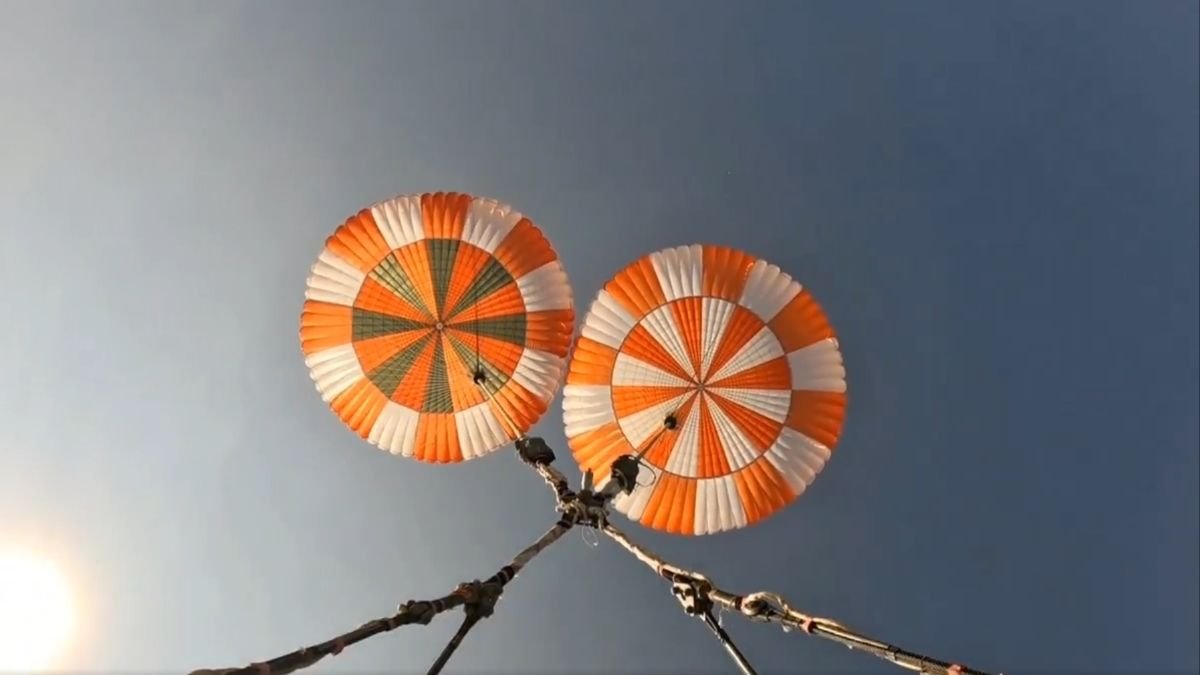The Indian space agency Indian Space Research Organisation (ISRO) continues to prepare for human spaceflight. It recently tested the parachute system intended to gently lower the Gaganyaan spacecraft to Earth.
The test in the northern state of Uttar Pradesh took place on November 3rd, as ISRO has only now announced. An Ilyushin Il-76 of the Indian Air Force carried a Gaganyaan model weighing approximately 6.5 tons to an altitude of about 2.5 kilometers and released it. The capsule landed safely on Earth with the help of two main parachutes.
This test was part of a series of aerial drop tests to qualify the parachute system for the Gaganyaan mission. A process called disreefing was practiced, ISRO announced.
The Gaganyaan crew module’s parachute system consists of a total of ten parachutes. The first two remove the protective cover of the parachute compartment. Then, two drogue chutes follow, which stabilize and decelerate the module. Three pilot chutes deploy the three main parachutes, which ultimately bring the capsule to a landing – with one of the main parachutes being redundant, as two would be sufficient for a safe landing.
The main parachutes open in two stages
The main parachutes are deployed in two stages, a process ISRO calls “Reefed Inflation”: The parachutes initially open partially, which is referred to as “reefing.” They are then fully deployed using a pyrotechnic device.
ISRO tested this disreefing with two parachutes. The objective was to assess the system’s structural integrity and load distribution under asymmetric deployment conditions.
India has been pursuing an ambitious space program for several years. The goal is to launch a space station into orbit by 2035 and to send humans to the moon by 2040. In 2023, ISRO already succeeded in an unmanned moon landing.
ISRO plans to send its first crewed spaceflight mission into orbit by 2027. In preparation, the robot “Vyommitra” is scheduled to fly into space aboard Gaganyaan.
(wpl)
Don’t miss any news – follow us on
Facebook,
LinkedIn or
Mastodon.
This article was originally published in
It was translated with technical assistance and editorially reviewed before publication.
Dieser Link ist leider nicht mehr gültig.
Links zu verschenkten Artikeln werden ungültig,
wenn diese älter als 7 Tage sind oder zu oft aufgerufen wurden.
Sie benötigen ein heise+ Paket, um diesen Artikel zu lesen. Jetzt eine Woche unverbindlich testen – ohne Verpflichtung!

